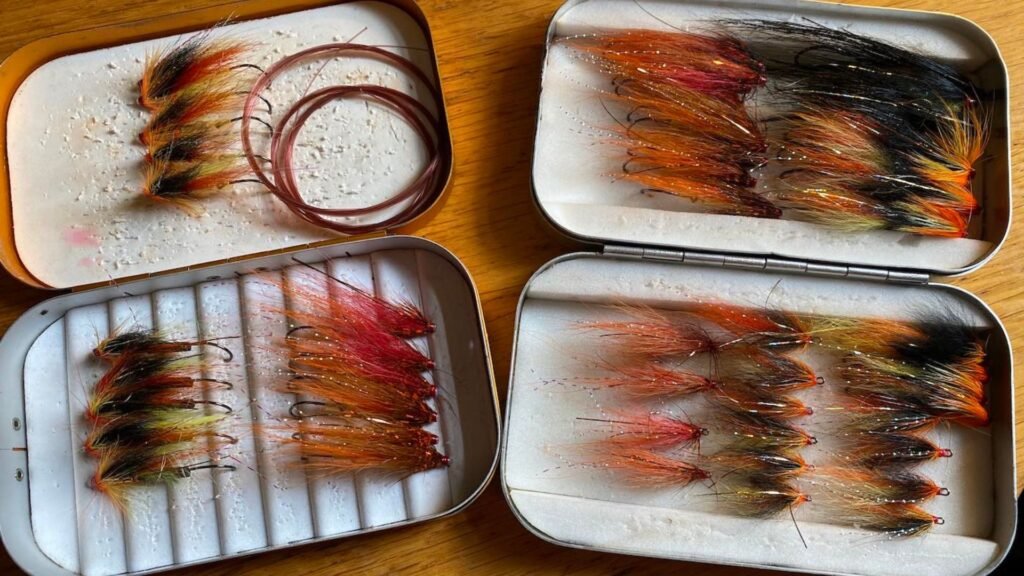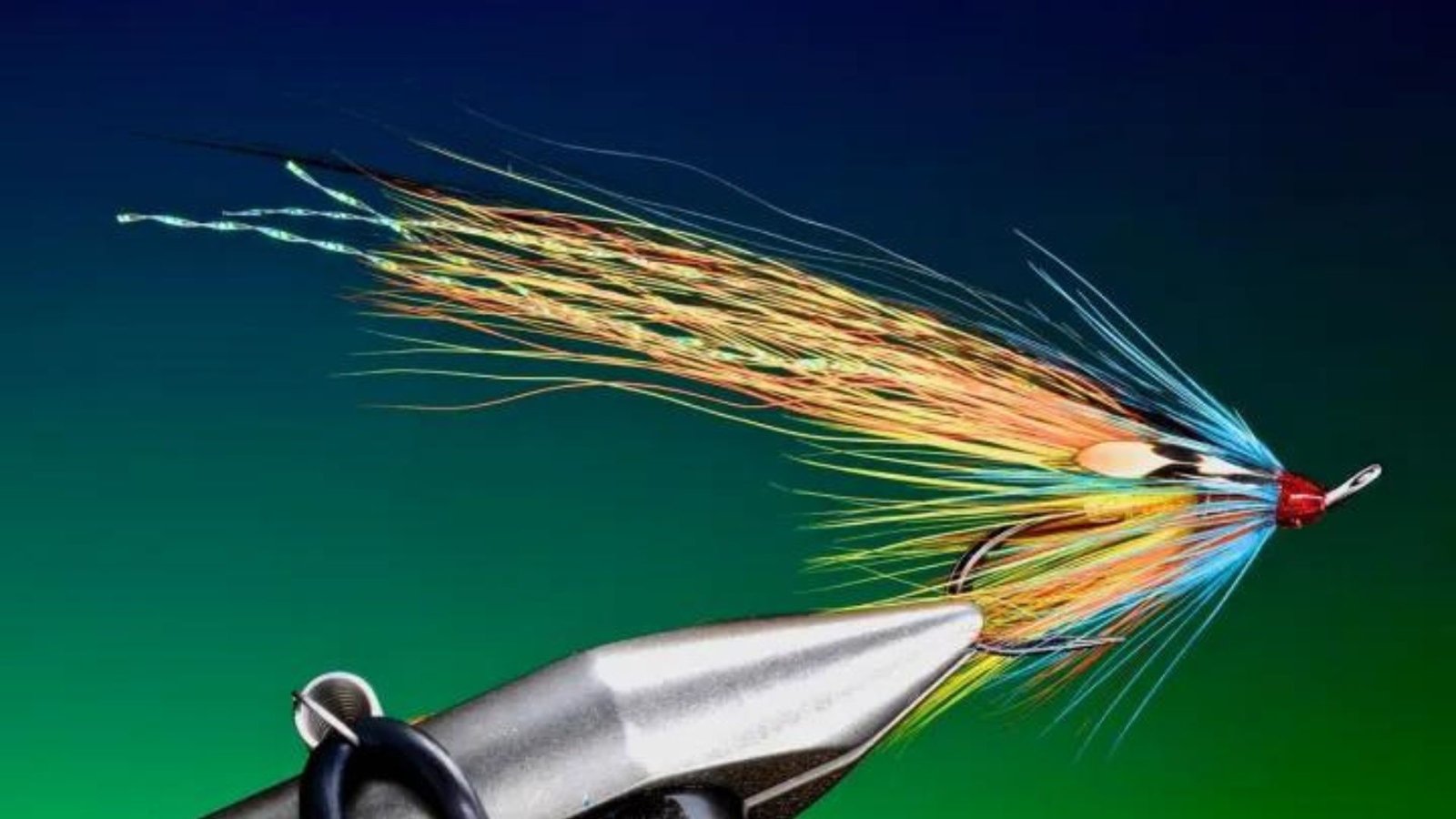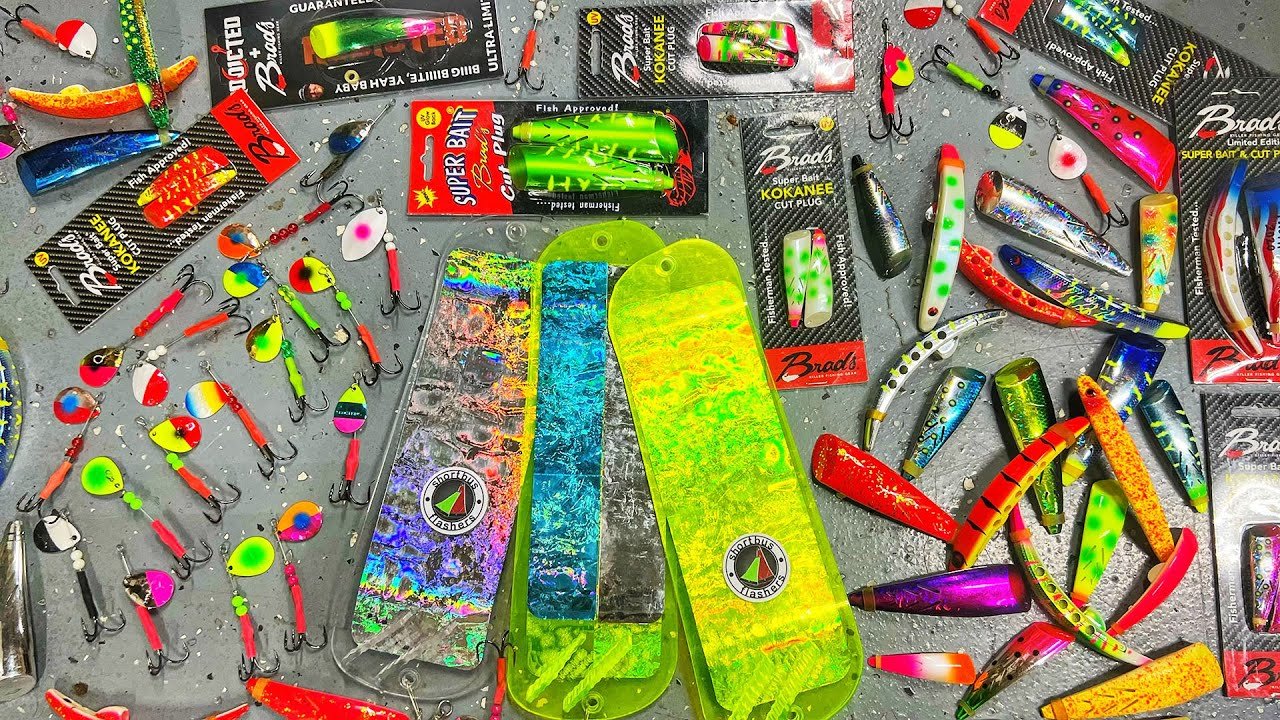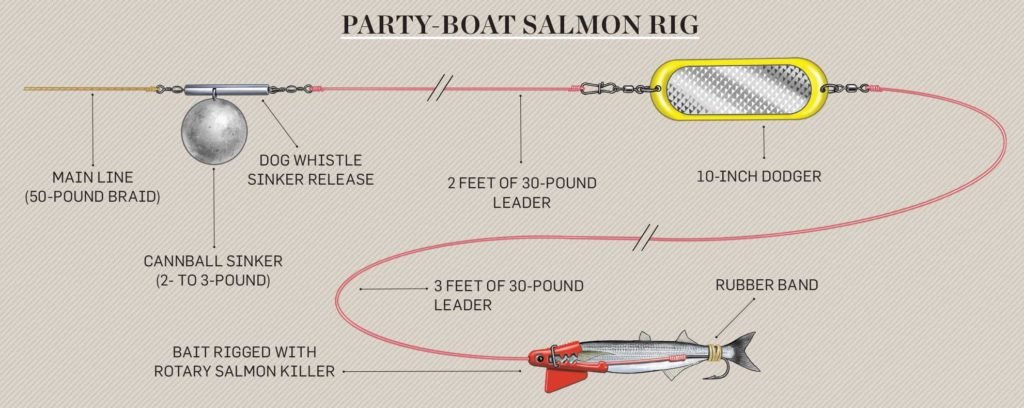Tying your salmon flies is both an art and a science. It requires patience, practice, and the right materials. By selecting high-quality materials, you can create durable and effective flies that increase your chances of a successful catch. Whether you’re new to fly tying or looking to refine your skills, understanding which materials to use is crucial.

How to Select the Best Salmon Fly Tying Materials
1. Understanding the Basics of Tying Materials
a. Hooks: The foundation of any fly, hooks come in various sizes and shapes. For salmon flies, you’ll typically need larger, stronger hooks. Look for hooks specifically designed for salmon fishing to ensure they can withstand the strength of these powerful fish.
b. Thread: The thread holds the fly together and comes in different thicknesses and colors. For salmon flies, a strong, durable thread is essential. Choose a color that complements the materials you’ll be using.
c. Feathers and Hackle: Feathers are used for the wings and hackle of the fly. They add movement and realism. Popular choices include hackles from roosters, pheasants, and ducks. Select feathers that are vibrant and have a good texture.
d. Fur and Hair: These materials are used for creating bodies and tails. Common options include deer hair, rabbit fur, and squirrel tails. Ensure the fur is soft and pliable for easy handling.
e. Synthetic Materials: In addition to natural materials, synthetic options like flashabou and crystal flash add sparkle and attraction to your flies. These materials can be highly effective in murky water.
2. Selecting Hooks for Salmon Flies
a. Size and Strength: Choose hooks that are large and strong enough to handle salmon. Sizes 4 to 2/0 are commonly used. Strong, tempered hooks are less likely to bend or break.
b. Shape: Different hook shapes serve various purposes. For salmon flies, opt for hooks with a wide gap and a sharp point to ensure a solid hook set.
c. Brand: Investing in reputable hook brands can make a significant difference. Brands like Mustad, Gamakatsu, and Owner are known for their quality and reliability.
3. Choosing the Right Thread
a. Strength: A strong, high-denier thread is crucial for tying durable flies. Look for threads in the range of 140 to 210 denier.
b. Color: Match the thread color to the overall color scheme of your fly. Black, red, and white are versatile choices that can complement many patterns.
c. Type: Waxed threads are easier to handle and provide better grip. Nylon and polyester threads are common options that offer durability and ease of use.
4. Selecting Feathers and Hackle
a. Type of Feather: Different feathers serve different purposes. For example, saddle hackles are ideal for palming, while marabou feathers are perfect for creating flowing tails.
b. Quality: High-quality feathers are essential. Look for feathers with vibrant colors, consistent barbs, and minimal damage. Fly shops often sell pre-sorted, premium feathers.
c. Source: Consider the source of your feathers. Feathers from game birds like pheasants and turkeys are popular for their durability and aesthetic appeal.
5. Choosing Fur and Hair
a. Type: Different types of fur and hair are used for different parts of the fly. For instance, deer hair is buoyant and great for creating spinning bodies, while rabbit fur is soft and excellent for dubbing.
b. Quality: High-quality fur and hair should be clean, with no signs of insect damage or discoloration. They should also be supple and easy to work with.
c. Color: Natural colors like brown, black, and gray are versatile, but don’t be afraid to experiment with dyed fur for more vibrant patterns.
6. Incorporating Synthetic Materials
a. Flash and Tinsel: Synthetic materials like flashabou and tinsel add sparkle and visibility to your flies. Use them sparingly to enhance the natural materials without overwhelming them.
b. Durability: Synthetic materials are generally durable and resistant to water damage. Ensure they are securely tied to the fly to prevent them from unraveling during use.
c. Versatility: Synthetics come in a wide range of colors and textures. Experiment with different combinations to find what works best for your target species and fishing conditions.
7. Tools for Fly Tying
a. Vise: A good quality vise holds the hook securely while you tie. Look for a vise with adjustable jaws and a stable base.
b. Scissors: Sharp, fine-tipped scissors are essential for precision cutting. Invest in a pair specifically designed for fly tying.
c. Bobbin Holder: This tool holds the thread spool and provides tension while you wrap the thread around the hook. A smooth, well-balanced bobbin holder makes the process easier.
d. Whip Finisher: This tool helps you tie a neat, secure knot at the end of the fly. It’s particularly useful for beginners learning to finish flies neatly.
Conclusion
In conclusion, selecting the best materials for tying salmon flies is a blend of understanding, quality, and practice. From choosing the right hooks and threads to picking the perfect feathers and fur, every component plays a crucial role in the effectiveness of your flies. Remember to invest in high-quality materials and tools, as they will make the tying process smoother and the result more durable. Experiment with different combinations and techniques to find what works best for you. With patience and practice, you’ll be crafting beautiful, effective salmon flies in no time. Happy tying!




